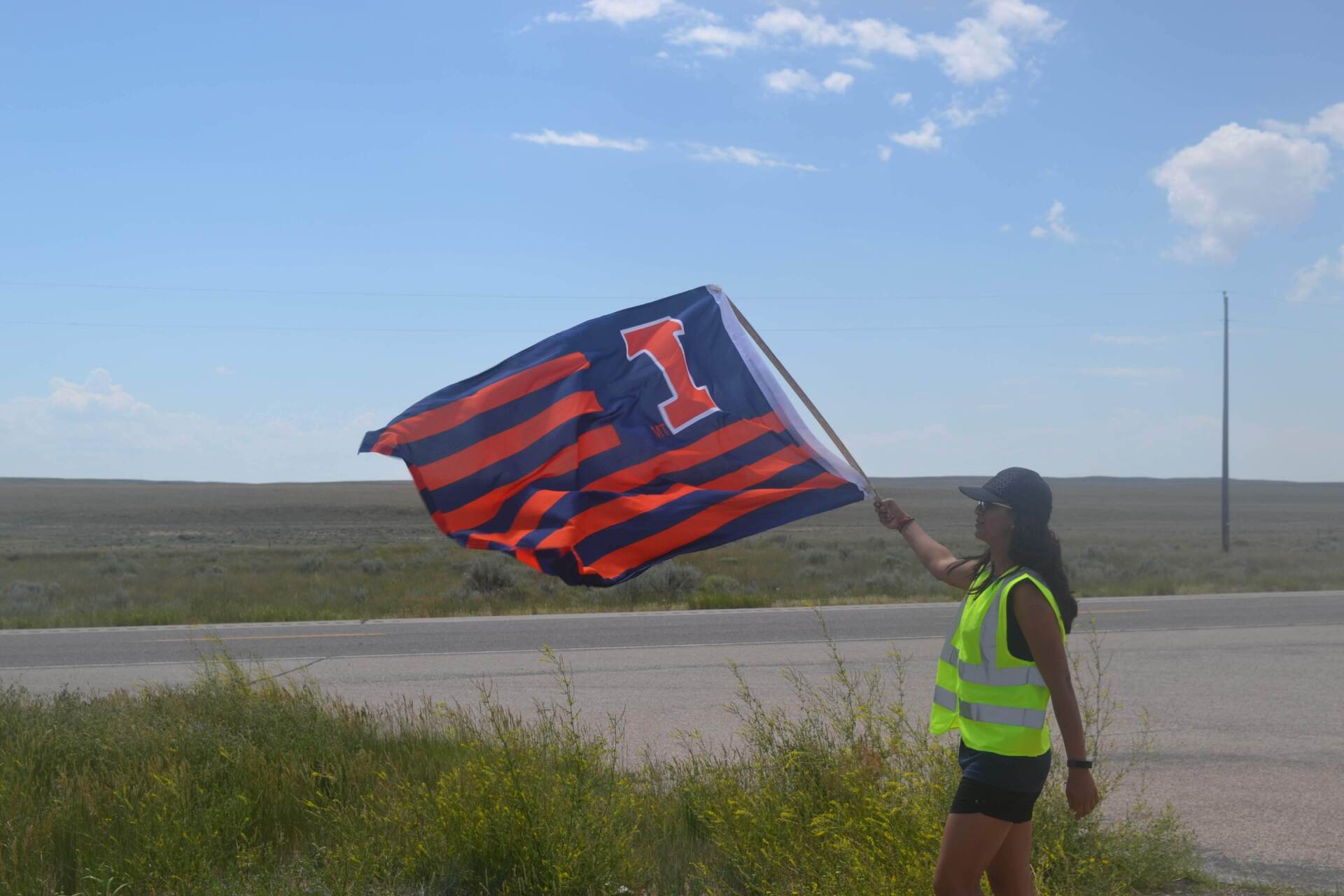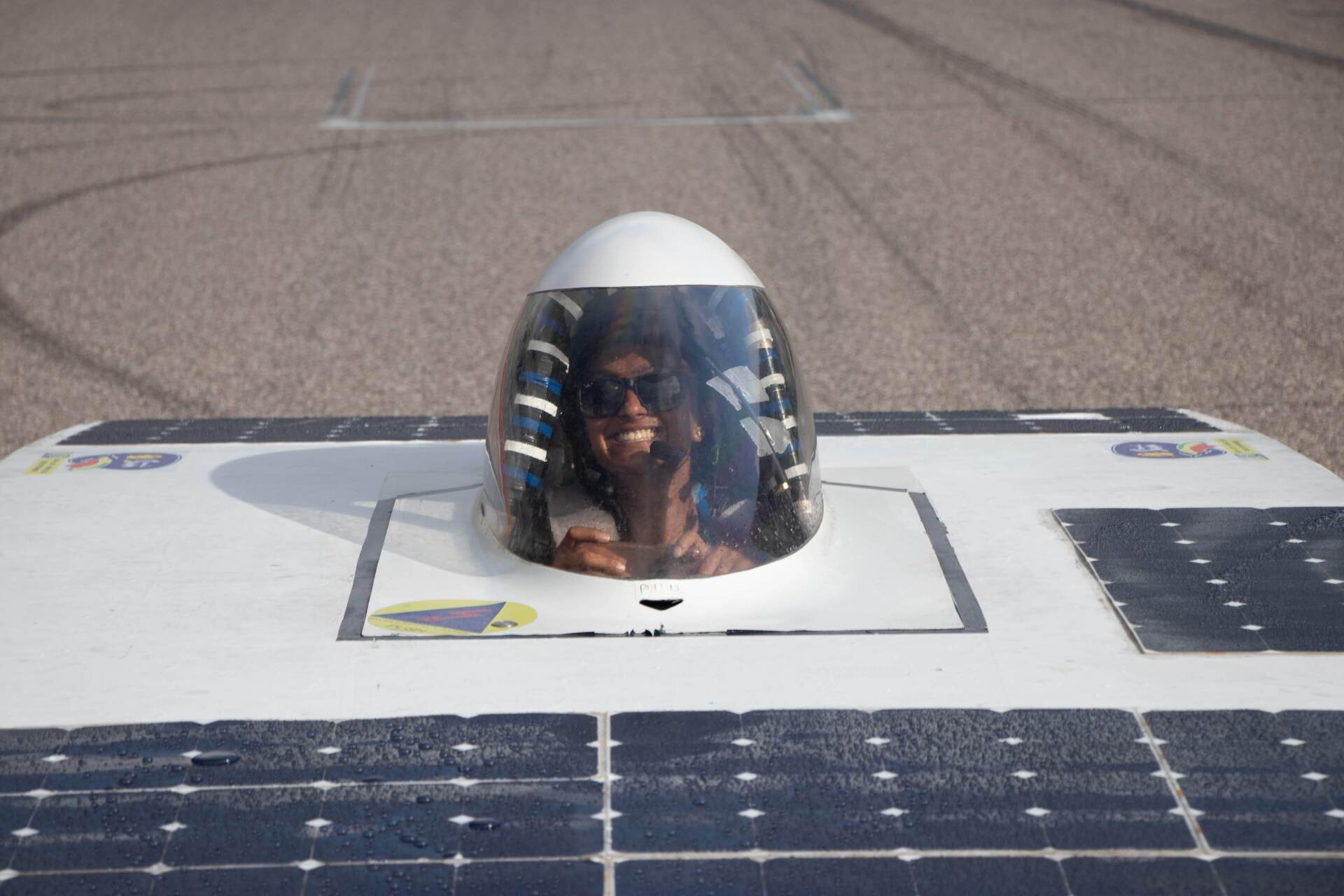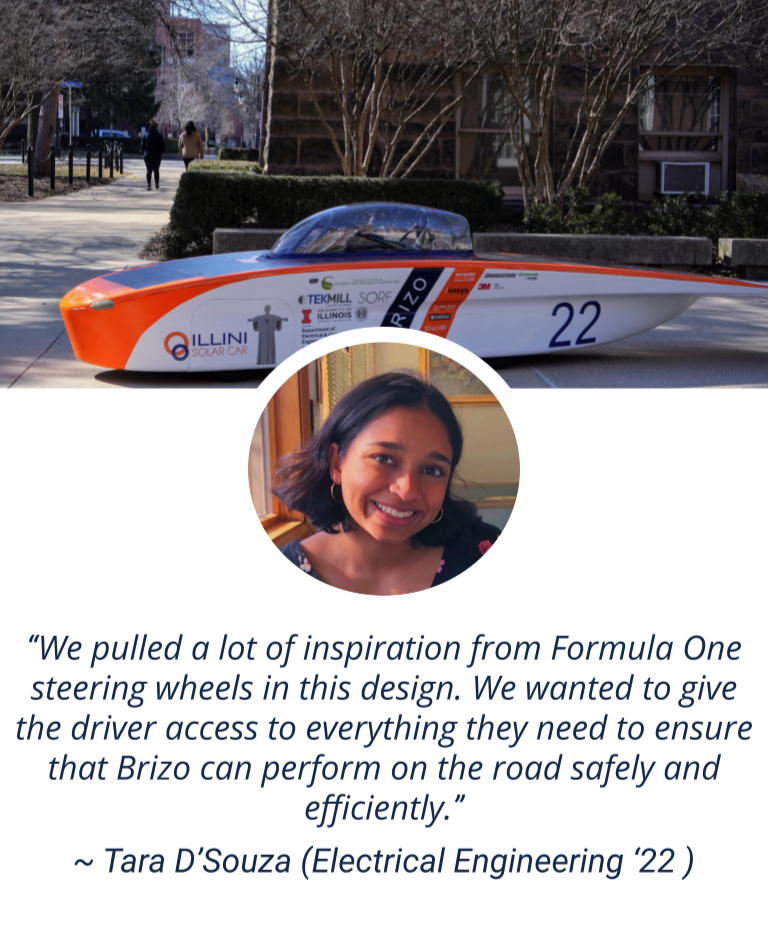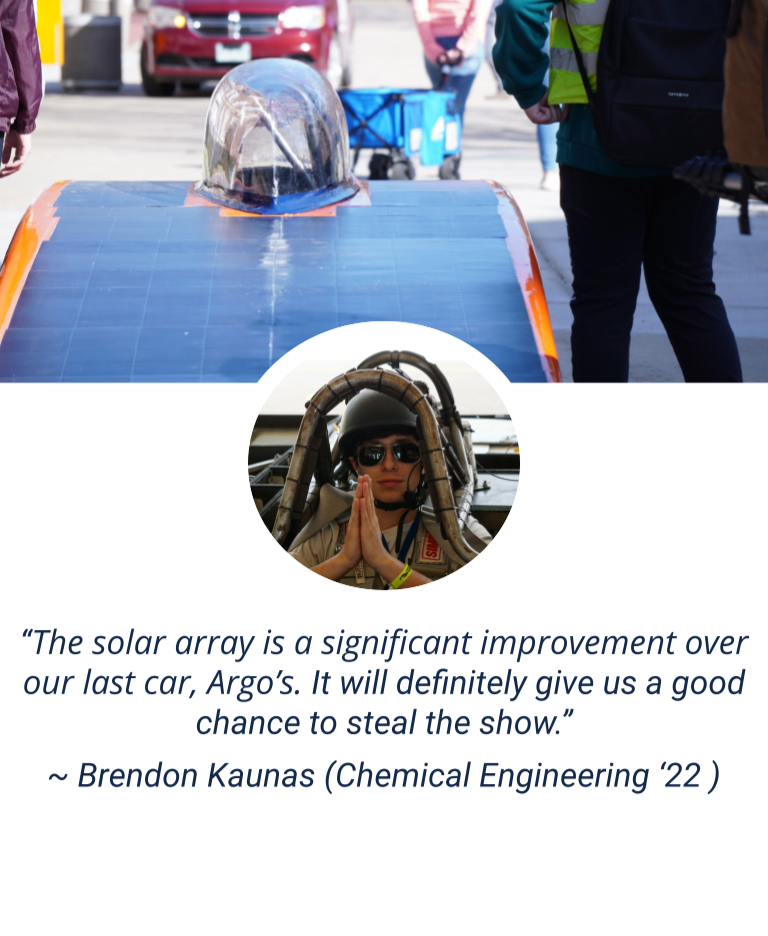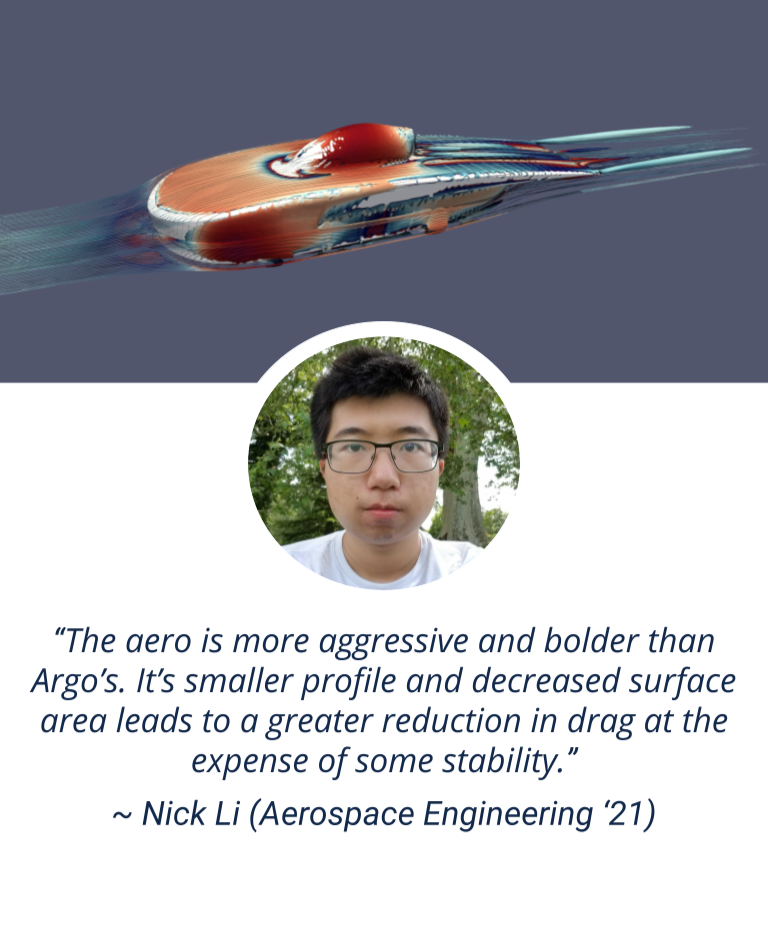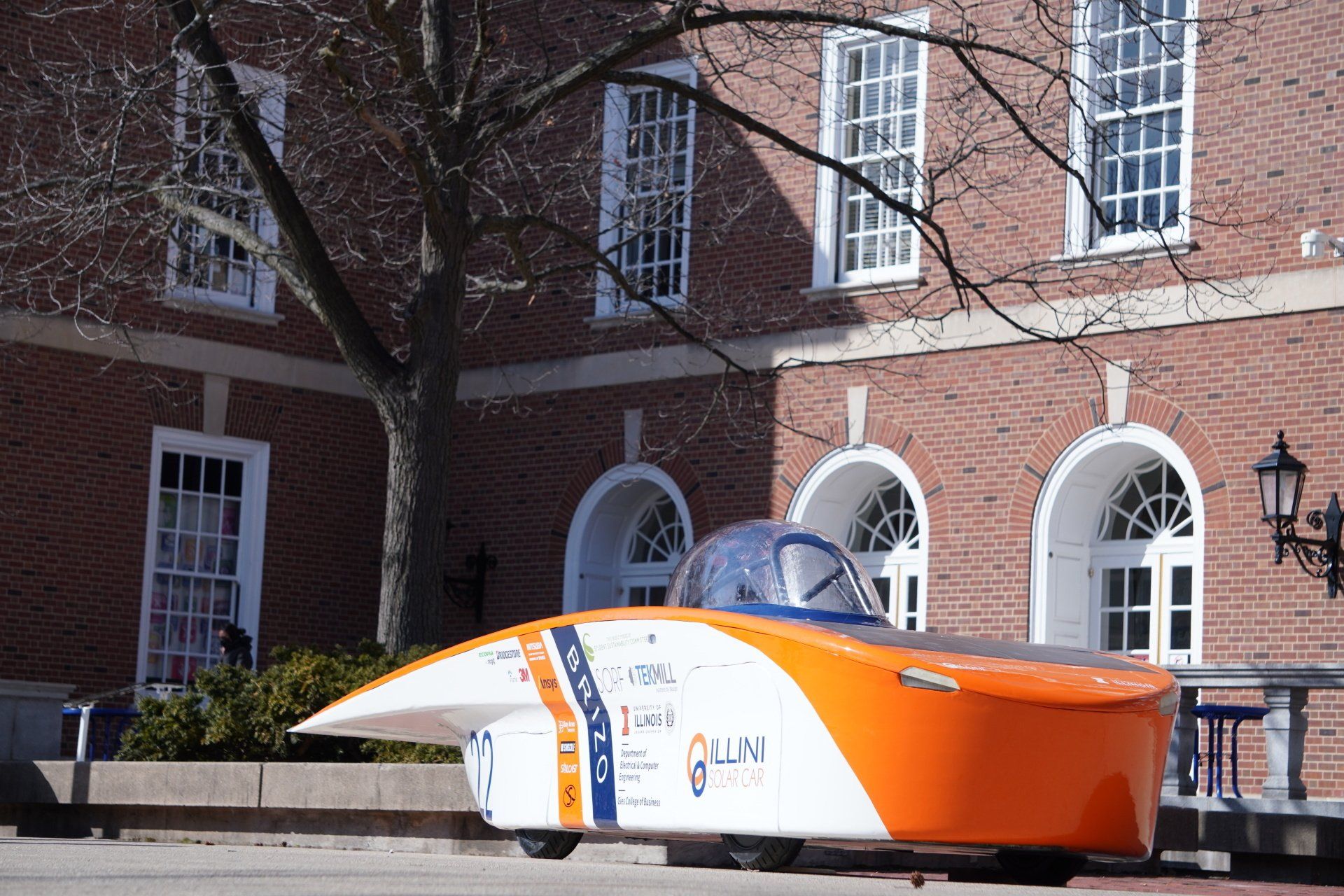SPRING 2021 NEWSLETTER:
THE BIRTH OF BRIZO
THE FUTURE IS
NOW.
What is Brizo?
Priyal Gosar, Race Team Captain
Computer Engineering '21
"It feels like yesterday I was a freshman on the team attending ASC in 2018, just in charge of cones and flags, and now three years later after hard work, learning, and planning, I am leading our largest race team yet with our brand new car! Over the last few years on this team, I have been part of the electrical team, served as Director of Operations, Alumni Coordinator, Battery Management Lead, and a driver. These roles have taught me invaluable technical and soft skills in college that will prepare me to tackle any challenging problem in my future and have brought me into the wonderful solar car community."
"We are returning to ASC after placing 7th in 2018 with our first car Argo. This year, we will be racing along the historic Santa Fe Trail from Independence, MO to Santa Fe, NM. There’s several great teams coming this year, and we are confident that Brizo will have a competitive edge in this race. I can’t wait to get Brizo rolling under its own power, start road testing, and train our drivers. Read on and you’ll get to learn more about Brizo and all the great new features we’ve implemented to build our best solar vehicle yet!"
Behind Brizo's Tech
"Brizo is the culmination of years of work that has touched hundreds of people and we couldn't have done it without you."
Tim Damisch, President
Mechanical Engineering '21
You Made This Possible
Thanks to your support, we have not only progressed and innovated in many different technological aspects, but you have also positively impacted and supported this generation’s passions and futures. Since 1995, your much appreciated support has been crucial to our success as we are now innovating the future of sustainable technology and compete in the highest level of solar racing. We thank you for your valuable support as you are helping us achieve our goal of changing the lives of students today.

